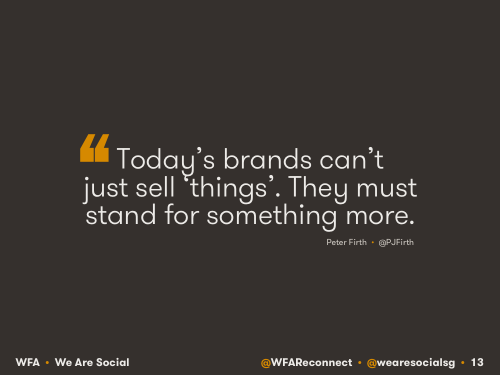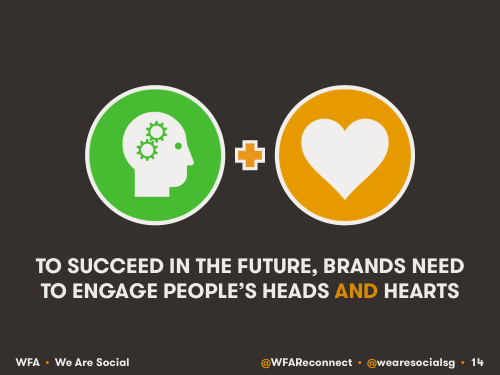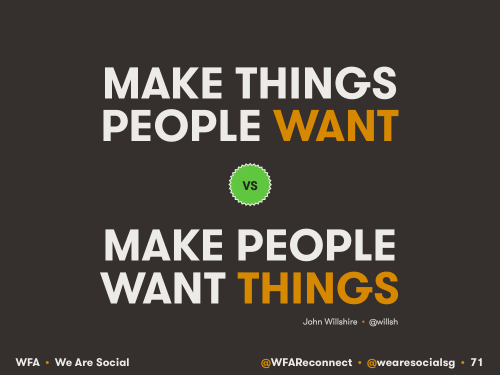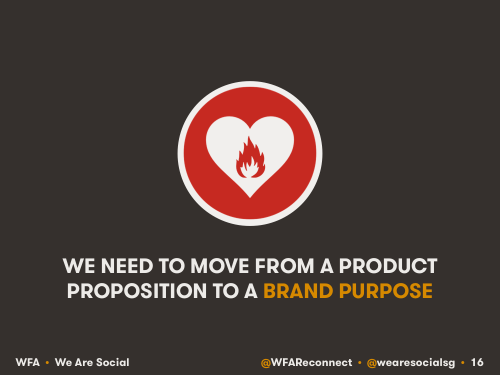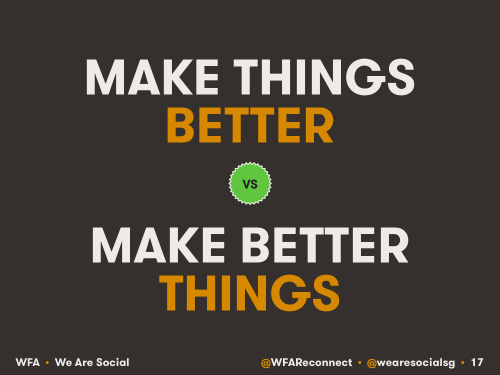Building A Purposeful Brand
As part of our ongoing work on #ProjectReconnect with the WFA, we recently explored the premise that all brands today must be ‘purposeful’. They’ve been kind enough to let us share our findings here too.
Purposeful Brands
In today’s competitive world, a great product is no longer enough for a brand to succeed.
A great product is still critical of course; no-one would willingly buy a bad product twice.
But as functional performance differences between companies’ offerings become ever more marginal, people increasingly rely on more intangible, emotional factors to inform and guide their choices.
As a result, the rules of the marketing ‘beauty pageant’ have changed. Today, brands can no longer rely on good looks alone; they need depth and soul too.
Above all, they need a higher-order ‘purpose’.
But what does a ‘brand purpose’ look like?
A Purpose Inspires Hearts and Heads
Given the choice between similar (and similarly priced) alternatives, people usually go for the option that makes them feel good.
Making people feel good isn’t just about hedonism though; brands that make a meaningful contribution to society, or brands that help people to reduce their impact on the environment, are also highly compelling.
A brand’s purpose doesn’t need to be about saving the world though; brands that offer people hope, or inspire them to improve themselves, are also well placed to earn a place in people’s hearts.
Tip #1: A great purpose engages people’s hearts, not just their heads.
A Purpose Goes Beyond Money
Ask businesspeople why their organisation exists, and most will offer a reply along the lines of “to make a profit.”
But if all businesses exist solely to make a profit, there’s very little differentiation between them.
Meanwhile, unless they happen to be company shareholders, none of your audience cares whether your organisation makes a profit. Indeed, making too much profit can actively turn people against you (think Occupy Wall Street).
If you want to compel people to choose your brand, you need to stand for something more meaningful than simply ‘selling stuff to make money’.
As John Willshire puts it, we need to focus on making things people actually want, not simply trying to make people want things we’ve already made.
Critically, you need to show people how you help them succeed, not just how you will succeed with their money.
Tip #2: Make sure your brand’s purpose articulates the value to your consumer, as well as to your organisation.
Define Your Promise Before You Define Your Product
People don’t buy what brands make; they buy what brands make happen for them.
Think of it this way: people don’t pay for shampoo; they pay for clean, beautiful hair – and the psychological and emotional benefits that beautiful hair brings (e.g. self-confidence).
Moreover, for your customers, products and services are simply means to an end, and these products and services are increasingly at risk from leftfield alternatives that deliver those same ‘ends’ in new or different ways.
In the most extreme cases, these alternatives can destroy entire industries in a matter of months (think Kodak).
However, by building your brand around the benefits you promise rather than the products you make, you can elevate your brand beyond product-centric comparison
At the same time, you also make it easier to extend your brand beyond a specific product category (think TOMS, who have credibly expanded from shoes into eyewear and coffee).
Tip #3: A brand purpose articulates what people can buy into, not just what they can buy.
Making It Different vs. Making A Difference
Too many brands mistake novelty and distraction for differentiation.
However, such an approach is very difficult to sustain. It may bring in the first sale, but novelty quickly wears off, and the brand must resort to increasingly impressive spectacle to keep people interested – which becomes increasingly expensive and difficult.
There’s an easy way round this though: by focusing on how your brand makes people’s lives better, or how it makes the world a better place, you stand a much greater chance of keeping people coming back for more.
The Essential Tip: Strive to make things better, not just to make better things.
This post first appeared on the #ProjectReconnect website.
